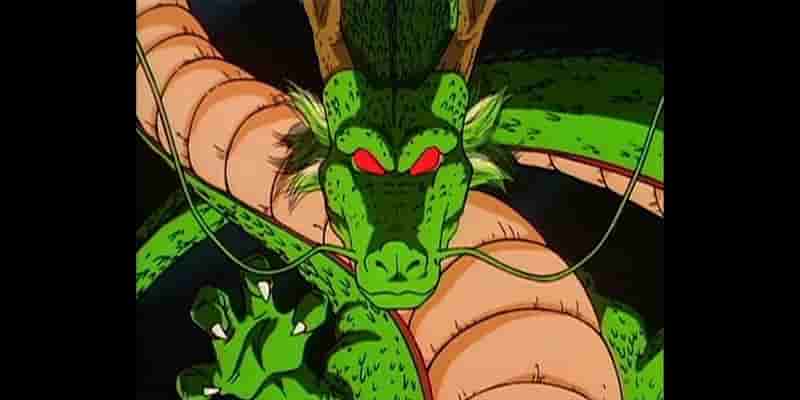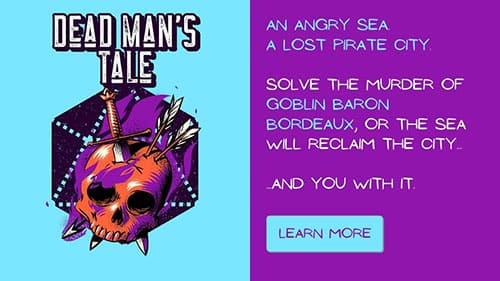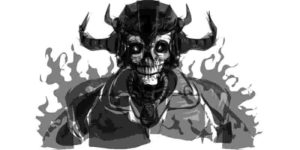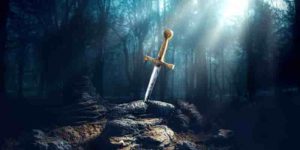The most famous dragons in movie and TV history include:
- Draco—Dragonheart
- Vermithrax Pejorative—Dragon Slayer
- Smaug—The Hobbit
- Shenron—Dragon Ball
- Toothless—How to Train Your Dragon
- Drogon—Game of Thrones
- Saphira—Eragon
- Elliott—Pete’s Dragon
- Falkor—The NeverEnding Story
- Haku—Spirited Away
- Mushu—Mulan
Dragons are iconic monsters across the world of movies, TV and ancient cultures. Sometimes, they exist as an intimidating obstacle for a hero to overcome—a force of nature. Other times, they hold a more revered role as a protector or even a god. Either way, they are one of the most intelligent monsters out there. Therefore, variations in appearance, role and personality of dragons in given stories can vary in a big way.
Draco—Dragonheart (1996)
Dragonheart follows a tragic story of a rogue knight, a noble dragon and a prince who falls to darkness.
Sir Bowen begins the story as a sword master to Prince Einon, the soon-to-be Saxon ruler. Though Prince Einon’s father ruled with an iron fist, Sir Bowen hoped to lead the prince to rule with honor. However, a peasant uprising in the kingdom would leave the young prince mortally wounded. Queen Aislinn, a Celtic woman, desperately brings the prince to a powerful, fabled dragon named Draco.
Draco holds a mystical role in the movie—being both magical and monstrous in appearance. Therefore, he places a piece of his heart inside the prince’s heart to save his life. The prince must promise to rule with honor (he doesn’t) in exchange for this gift.
When the prince turns out to be a real scum bag, Sir Bowen blames the dragon. He lives his life hunting dragons for coin and revenge, until the day he encounters Draco. Funny thing is, they have a stand off for an entire night. Finally, they come to an agreement out of pure exhaustion and have a realization of each other’s pain.
Draco flips the ordinary role of a dragon on its head. This time, the knight is the one who is behaving monstrously. Eventually, the knight and the dragon become close friends.
Vermithrax Pejorative—Dragon Slayer (1981)
Vermithrax Pejorative is a real nasty 400-year-old dragon from Dragon Slayer.
In a post Roman civilization, the Urland kingdom is terrorized by a massive dragon. To appease the beast, they hold a lottery to sacrifice a virgin twice a year. Therefore, a young man named Valerian decides enough is enough and leads an expedition to find the last known sorcerer, Ulrich of Cragganmore. However, upon reaching the famed sorcerer, an apparent mishap leaves the old man dead. This is a problem, because now they’ve angered the dragon.
The horrified sorcerer’s apprentice, Galen Bradwarden, is then selected to be the owner of the wizard’s magical amulet. At least now he has some confidence and journeys back with Valerian and the soldiers. Then, surprise, Valerian isn’t a man. In fact, she’s a young virgin hiding from the lottery. Her and Galen fall in love with each other and seek to find a way to defeat the dragon.
Vermithrax Pejorative is a total force of nature in this movie, causing earthquakes and fiery destruction wherever she goes. Yes, she’s a lady dragon, or at least an asexual one with a brood of young dragons. She falls into the monstrous category much more than most on this list and is incredibly powerful. She’s supposed to strike fear in your heart—an insurmountable obstacle for the heroes to overcome.
Smaug—The Hobbit (1937)
Yet another monstrous force of nature, Smaug is a powerful dragon in The Hobbit. This Tolkien classic novel has many variations in film and on stage, all with the terrifying Smaug as a major threat.
The Hobbit begins with the wizard Gandalf asking the homely Bilbo Baggins to accept Thorin Oakenshield and his band of 12 dwarves as guests. Bilbo obliges his old friend but gets tricked into joining the adventure. In fact, the dwarves are on a mission to reclaim treasure from their homeland, The Lonely Mountain.
This episodic story brings our heroes on a long adventure through forests and caves. Bilbo finds a particular magic ring of interest, dodges trolls and goblins and finds himself hiding from a dragon.
Though Tolkien wasn’t a huge fan of direct analogy in story (unlike his friend C.S. Lewis), Smaug has a definite archetype. This is important because it speaks to a metaphor used with Western dragons throughout literature—greed. He simply wants to sleep on his horde of treasure, keeping it from the dwarves or the people of Lake-town.
Naturally, greed can strike anyone. This is shown in the direct conflict following Smaug’s demise. Now that it’s not his treasure anymore, whose treasure is it? The elves, dwarves and humans all want a piece. Fortunately, an enormous army of raiding goblins joins the 3 kingdoms together, who now have a shared purpose of survival. Funny how that works.
Shenron—Dragon Ball (1984)
Shenron is a powerful, god-like dragon in the Dragon Ball universe. Therefore, he brings tons of epic energy. Once summoned by the dragon balls, he grants any wish.
Connected to the earth’s kami (god/protector), Shenron is summoned from the fiery center of the earth. Though he strongly resembles a four-fingered Chinese dragon, his subtle antlers remind me of the Kirin. The Kirin is like a unicorn in Chinese/Japanese mythology, a deer-like, fiery chimera. Both creatures are considered crazy powerful and highly revered.
All this said, Shenron’s purpose is to bring the awesome factor. The wishes he grants drive the story and his presentation on screen is exciting. I could have an endless list of animated dragons in this article, but Shenron is a major icon across the world.
Toothless—How to Train Your Dragon (2010)
Toothless is a protagonist and rare Night Fury breed of dragon in How to Train Your Dragon.
Hiccup, a young Viking who is more of a nerd than the rest of his clan, finds toothless injured one day. However, his Viking clan is constantly in conflict with raiding dragons. In his world, dragons are as natural as birds, with many different species. These dragons are more scientific and less magical than most dragons are portrayed.
The Night Fury breed is legendary. They are like the fighter jet of the dragon world, flying incredibly fast with cutting maneuvers. They have midnight black scales and retractable teeth. Thus, the name Toothless.
Though they’re supposed to be enemies, Hiccup empathizes with the wounded dragon. Sure, he’s supposed to kill it, but he finds a better path. Crafting simple mechanical devices in his shop, Hiccup realizes that he can help the dragon fly again. Thus, he can fly with the dragon—a never-before seen feat.
At the end of the day, Toothless is cute. He’s small (for a dragon) and expressive. However, his jet-like flying ability gives him an accompanying cool factor. He represents how empathy can change perception.
Drogon—Game of Thrones (2011)
The dragons of Game of Thrones are central figures of power, especially the dominant Drogon. Naturally, within a world of feuding warlords, a flying fire beast is near unbeatable.
These dragons of legend are bonded to the Targaryen bloodline. However, the period in which Game of Thrones takes place hasn’t seen a living dragon in centuries. When Daenerys Targaryen finally hatches 3 dragon eggs, she becomes the mother of dragons. This will be central to her storyline, which has been full of heartache and loss.
I could write an entire article about each book in the series. But suffice to say, Drogon is Daenerys Targaryen’s source of strength when she wages war. Named after her late husband, Khal Drogo (and also a silly rearrangement of the word “dragon”), Drogo is a powerful specimen. In the show, he is actually the one who ultimately destroys the Iron Throne everyone is so murderously after.
Saphira—Eragon (2006)
Saphira is the blue-scaled dragon that is raised by Eragon.
This story follows a classic hero trope—the farmer’s kid with hidden potential. For Eragon, this potential comes in the form of dragon riding. Therefore, Saphira holds a supportive role in the story. In many ways, this original book and movie popularized the idea of dragon riding in pop culture. Sure, George R. R. Martin and many others have used this trope in fantasy. But Eragon hit theaters at just the right time.
Related Posts:
6 Best Grimdark Fantasy Movies and Shows
| Best Fantasy Sub Genres and Pop Culture Examples
|
Elliott—Pete’s Dragon (1997)
Pete’s Dragon follows an unfortunate young protagonist named Pete and his invisible dragon friend, Elliott. Of course, “invisible” sounds like make believe, but Elliot is very much there. We see this when Elliot interacts with the world. On screen, Elliot is animated against a live action setting.
This movie’s a sad one, folks. Pete is essentially enslaved by an abusive adoptive family, and the movie takes place in a rugged, early 1900’s setting. However, Pete finds hope through his best friend, who helps him escape his horrible captors.
Pete finds refuge in a strange little lighthouse at the edge of a New England town named Passamaquoddy. Here, he struggles to be accepted—mostly due to the clumsiness of Elliott. Eventually, Elliott would save the day by igniting the lighthouse light in a dire storm, exposing his existence to Pete’s friends.
In this movie, Elliott holds a role as “imaginary friend”, with the twist that he’s actually real. In this way, he’s one of the friendliest dragons on this list.
Falkor—The NeverEnding Story (1984)
Book loving 10-year-old Bastian Bux is a bit of an outcast in the real world. However, an encounter with a special book called The NeverEnding Story brings his imagination on an adventure to find his inner hero.
In the beginning, we follow along with Bastian—who is reading of another child hero, Atreyu. Atreyu is a horse-riding young adventurer who is chosen to save Fantasia. The Childlike Empress is sick and needs Atreyu to retrieve a special cure. Otherwise, the Nothing will wipe out Fantasia and all its magical inhabitants.
Naturally, a huge adventure unfolds, where the spirit of fantasy fiction is threatened by the apathy of humanity. When no one reads, the world of Fantasia no longer exists. But Bastian won’t have it. He’ll read and remember.
Falkor is a gentle, white luck dragon. He looks like a fusion of a family dog and a flying dragon. He enters the story to save the day—a common trope in fantasy lore known as a eucatastrophe—and flies Atreyu to where he needs to be at just the right time. Thus, he is known as a luck dragon. His entrance in the story is especially poignant after Atreyu loses his horse and best friend, Artax, in the Swamps of Sadness.
Haku—Spirited Away (2001)
In Spirited Away, a young girl named Chihiro is taken on an extraordinary adventure through the spirit world. Like Alice in Wonderland, her adventure begins with a simple backyard setting that tumbles into a whole new reality.
Haku appears as another local child and warns Chihiro to return home before sundown. Apparently, being on the wrong side of the river at night leads the young protagonist to a world of fascinating yokai. These spirits are entities of the surrounding elements—everything from the river itself to little dust pollutants inside the river.
In fact, Haku is the spirit of the river, an Eastern dragon guardian. His role is to represent the river and protect his dominion. However, his character tries to guide and protect Chihiro within the story. Though Chihiro’s presence in the spirit world is causing problems, Haku protects her from much of the consequences. He is, after all, a guardian by nature.
Mushu—Mulan (1998)
Another Eastern guardian dragon, Mushu was once the guardian of the Fa family in Disney’s Mulan. That is, until he made a terrible mistake and failed to protect one of the Fa ancestors. Unfortunately, the spirit of this soldier has to walk around with his head in his arms. This act greatly demoted Mushu to gong ringer, which is why he’s such a small dragon.
Throughout Mulan’s struggles in the military and battles with the Huns, Mushu remains loyal and lighthearted. Eventually, he becomes integral to defeating the villain of the story, Shan Yu, and saving China.
Mushu plays sidekick to the protagonist, Mulan. In typical Disney fashion, he blends the tropes of wisecracking sidekick and lovable animal companion. However, even with his sidekick status, he experiences huge growth in the story. Ultimately, he regains his status as family guardian for helping Mulan though such a tremendous adventure.




